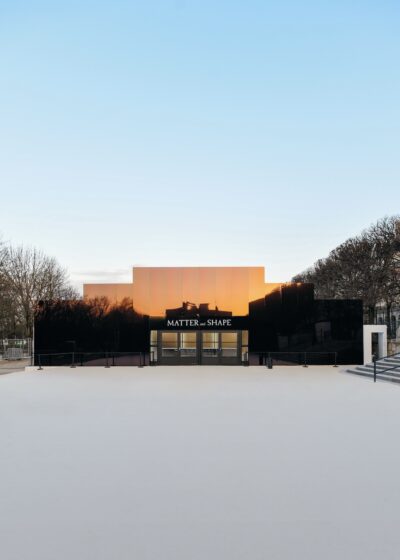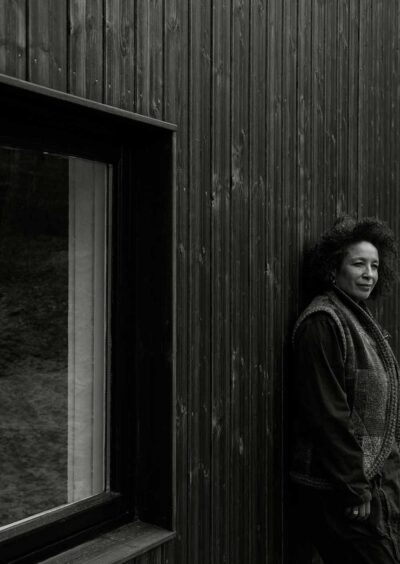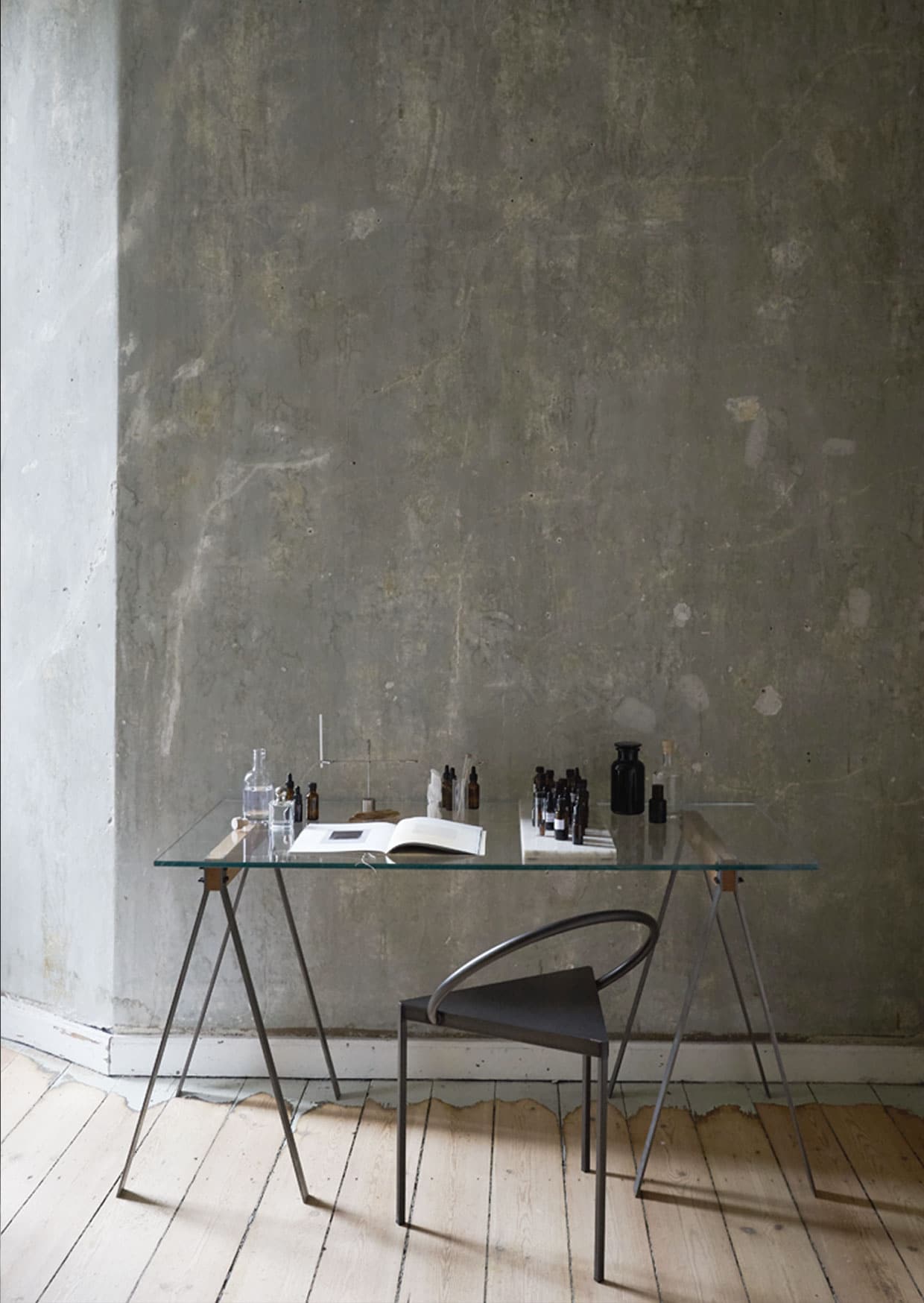
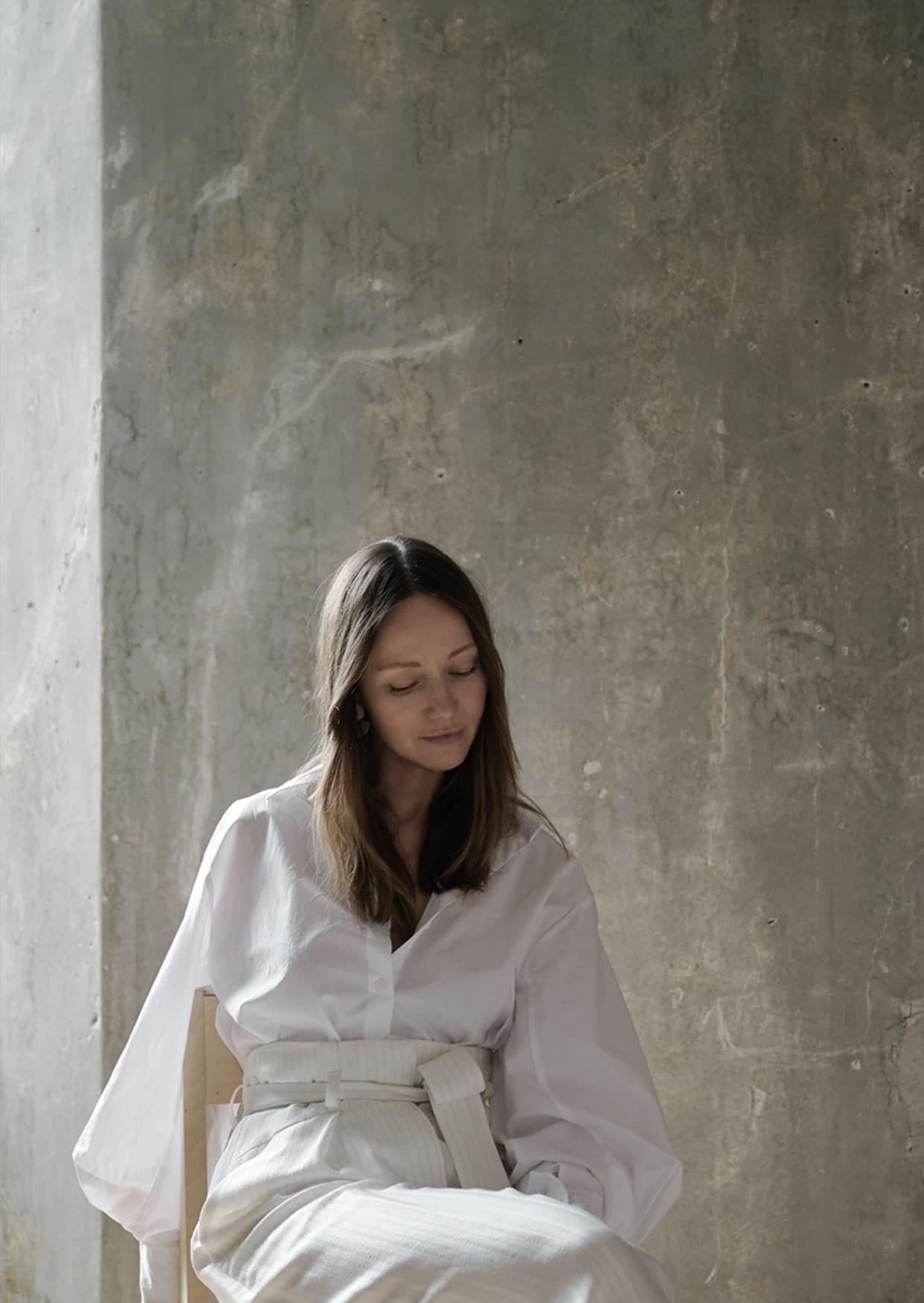
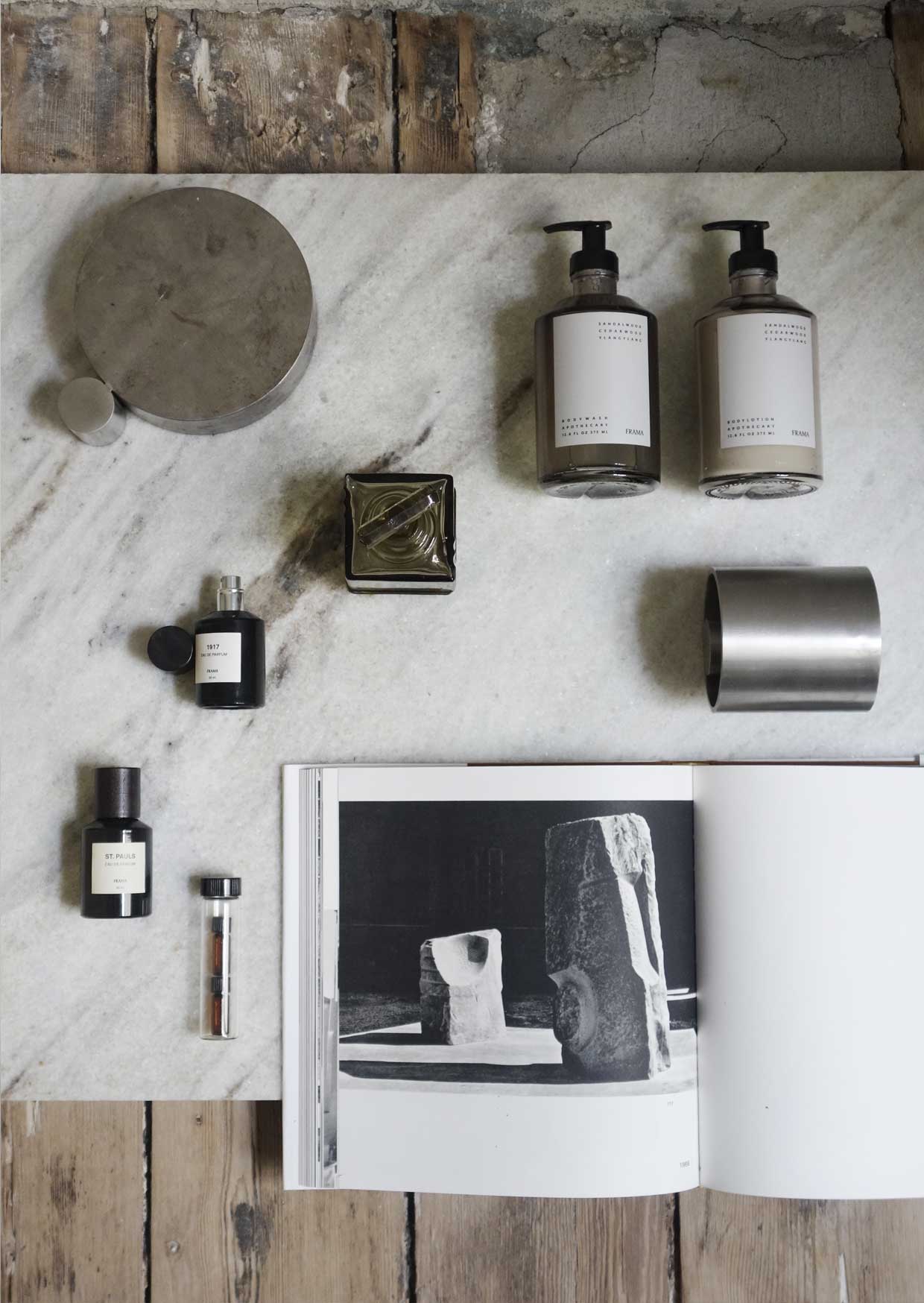
A sense of scent
portrait
Smell can evoke an emotion or a memory. It affects the subconscious less directly than taste, but much more profoundly, says scent developer Lena Norling.
Our sense of smell means a lot, but we normally don’t think about it, we take it for granted. Sometimes it even evokes emotion and memory, like when we enter a room and it smells delightful. Still, it’s very much in the subconscious.
I am more of a storyteller than a classic parfumeur. The story may be about a person, a sensation or even a specific place.
When creating the St. Pauls scent for Frama, located in the former St. Paul’s Apothecary in Copenhagen, I took the wooden interior, the heavy wooden panels and the dusty smells as my focal point. The scent has heavy woody base notes while the top notes also have a fraicheur or freshness and energy that represents the people who surround Frama and their approach to design.
Right now I am about to launch a scent that tells the story of the warmth and hospitality I experienced on Bali. I felt embraced at the same time as experiencing happiness in the most basic conditions alongside the colours, smells and sounds. During my stay I rented a perfumer’s studio and created an olfactory rendition of it. Replicating that at home was challenging. Suddenly the building blocks I used were not the same as the ones I had on the island.
When composing scent, I work from a lot of references: architecture, a piece of fabric that talks to me, literature I relate to, botany, colours and poetry. I always use musical inspiration in my work. As I am not educated as a classical perfume maker I don’t feel bound by traditional rules, although I’m well aware of the basic components and theories of building a scent. My approach means I can be less conventional and more experimental.
I have chosen to work with only natural ingredients in my scents. Synthetics, which now account for most of the ingredients in the most commercial perfumes on the market, are cheaper to produce, easier to control and readily scaleable. But what you get from working with essential oils has a unique character not replicated in synthetics. Not just one molecule to represent a flower, it’s 400, 600, 800 molecules, all in one oil.
That means making two oils harmonise is a very special, almost poetic occurrence. Sometimes they fight and sometimes they complement each other in a way that turns into a perfect marriage.
In the end, I bring my stories, memories and experiences to life. I’m not open to suggestions and changes. The scents represent the way I experience the world. If you are not attracted to it, so be it, but if you like it, please be my guest and share my experiences.
This story was featured in The Paper, published by Ark Journal during 3daysofdesign 2019, as part of the Hotel Charlottenborg design exhibition.
AS TOLD TO ALISA LARSEN
PHOTOGRAPHY MISHAEL PHILLIP
ZUCCHETTI AND FRIENDS
A custom-built showroom in Milan exhibits new design-driven Zucchetti collections like works of art.
MATTER AND SHAPE 2025
In the beautiful surroundings of the Jardin des Tuileries, a new chapter in design culture was written. MATTER and SHAPE 2025, a design salon unlike any other, positioned itself at the very intersection of art, materiality, and modern craftsmanship.
JOURNEY’S END
A 90s portable church has found its home on a secluded hill in the forest, becoming a contemporary respite for creation and reflection for Josephine Akvama Hoffmeyer.

A sense of scent
portrait
Smell can evoke an emotion or a memory. It affects the subconscious less directly than taste, but much more profoundly, says scent developer Lena Norling.
Our sense of smell means a lot, but we normally don’t think about it, we take it for granted. Sometimes it even evokes emotion and memory, like when we enter a room and it smells delightful. Still, it’s very much in the subconscious.
I am more of a storyteller than a classic parfumeur. The story may be about a person, a sensation or even a specific place.
When creating the St. Pauls scent for Frama, located in the former St. Paul’s Apothecary in Copenhagen, I took the wooden interior, the heavy wooden panels and the dusty smells as my focal point. The scent has heavy woody base notes while the top notes also have a fraicheur or freshness and energy that represents the people who surround Frama and their approach to design.
Right now I am about to launch a scent that tells the story of the warmth and hospitality I experienced on Bali. I felt embraced at the same time as experiencing happiness in the most basic conditions alongside the colours, smells and sounds. During my stay I rented a perfumer’s studio and created an olfactory rendition of it. Replicating that at home was challenging. Suddenly the building blocks I used were not the same as the ones I had on the island.
When composing scent, I work from a lot of references: architecture, a piece of fabric that talks to me, literature I relate to, botany, colours and poetry. I always use musical inspiration in my work. As I am not educated as a classical perfume maker I don’t feel bound by traditional rules, although I’m well aware of the basic components and theories of building a scent. My approach means I can be less conventional and more experimental.
I have chosen to work with only natural ingredients in my scents. Synthetics, which now account for most of the ingredients in the most commercial perfumes on the market, are cheaper to produce, easier to control and readily scaleable. But what you get from working with essential oils has a unique character not replicated in synthetics. Not just one molecule to represent a flower, it’s 400, 600, 800 molecules, all in one oil.
That means making two oils harmonise is a very special, almost poetic occurrence. Sometimes they fight and sometimes they complement each other in a way that turns into a perfect marriage.
In the end, I bring my stories, memories and experiences to life. I’m not open to suggestions and changes. The scents represent the way I experience the world. If you are not attracted to it, so be it, but if you like it, please be my guest and share my experiences.
This story was featured in The Paper, published by Ark Journal during 3daysofdesign 2019, as part of the Hotel Charlottenborg design exhibition.
AS TOLD TO ALISA LARSEN
PHOTOGRAPHY MISHAEL PHILLIP



